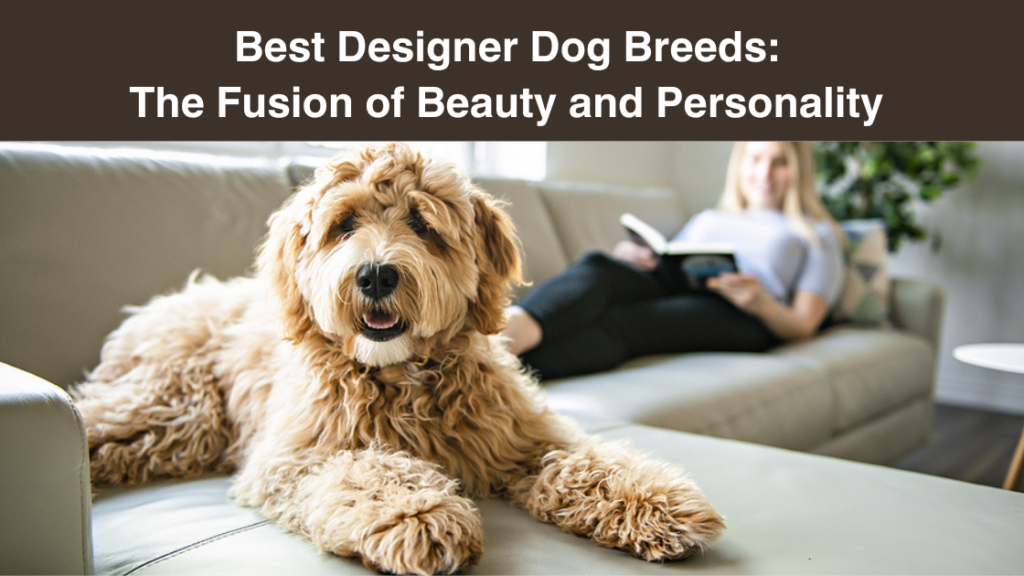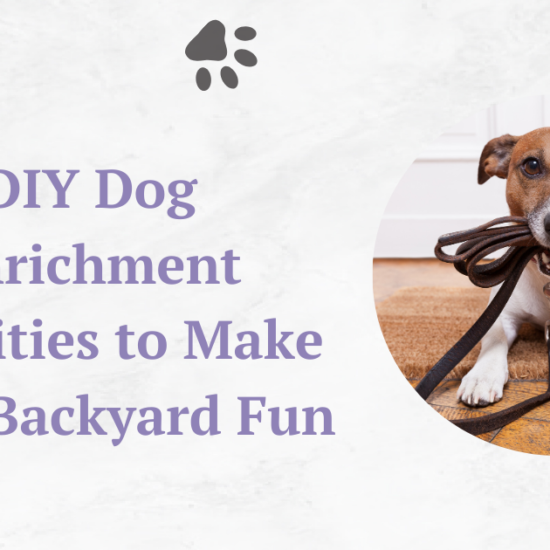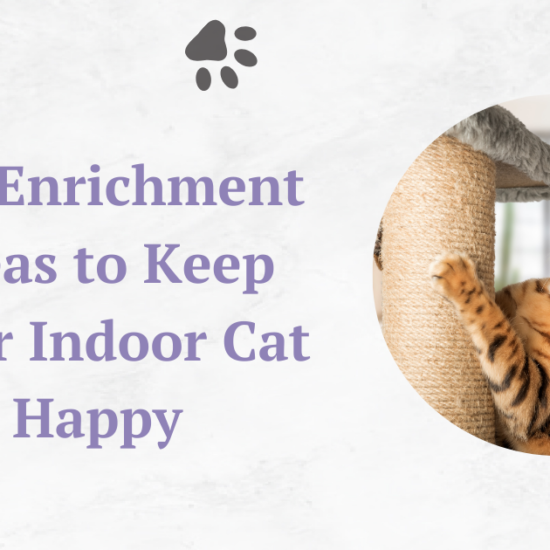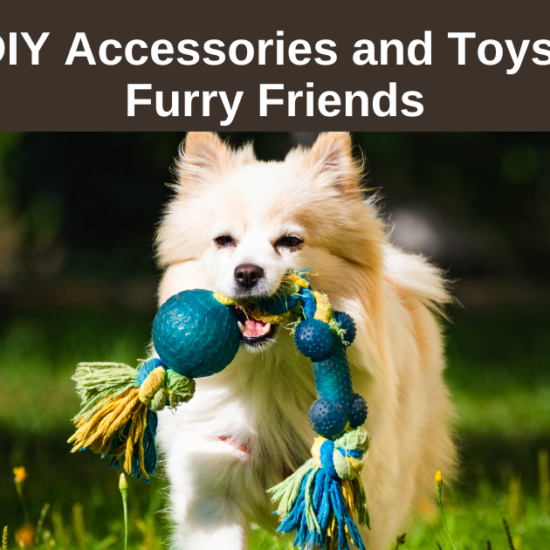The best Designer dog breeds have grown exponentially in popularity in recent years, capturing the hearts of dog lovers all around the world. These one-of-a-kind and endearing friends are the result of careful crossbreeding between two purebred canines. Designer dog breeds, also known as hybrid dogs or crossbreeds, combine the greatest traits of their parent species to create an amazing and distinct canine companion.
Table of Contents
Introduction
In this detailed post, we will go into the world of the most popular designer dogs, exploring their origins, qualities, benefits, and considerations for potential owners.
Designer Dog Breeds
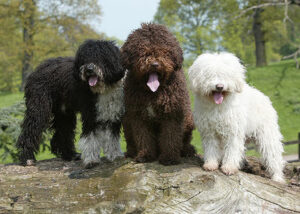
Let’s explore the best designer dog breeds and their interesting origin story.
Recognizing Designer Dog Breeds
Designer dog breeds, are essentially mixed-breed canines that are not recognized as official breeds.
While some people support the concept of designer dog breeds and value the benefits they provide, others argue that crossbreeding dilutes the purity of established breeds and can result in unanticipated features and health problems. They claim that without the stability and predictability of purebred features, potential owners may struggle to understand and manage the designer dog breeds’ special demands and habits.
The Origins of Designer Dog Breeds
The origins of the best designer dog breeds have been a source of contention. Critics claim that the production of these breeds serves no purpose other than to suit the needs of trendy pet ownership. They claim that early crossbreeding efforts were frequently haphazard and lacked sufficient breeding standards, potentially leading to inconsistency.
However, supporters of the best designer dog breeds believe that the desire to combine the most significant features of their parent species, like intelligence, loyalty, or hypoallergenic coats, drove the development of these varieties. They say that certain designer dog breeds have acquired consistent traits and attributes via rigorous selection and responsible breeding techniques.
Regardless of the ongoing debate, potential owners should thoroughly research the most popular designer dogs they are interested in and ensure that reputable breeders are using responsible breeding practices to reduce the risks associated with inconsistent results and potential health issues.
Benefits of Getting The Best Designer Dog Breeds
Health and Hybrid Vigor
The concept of hybrid vigor, which claims that crossbreeding two genetically distinct purebred dogs can result in offspring with greater health and vitality, is one of the lauded benefits of the best designer dog breeds. Due to the introduction of genetic variety, proponents say that hybrid dogs may have a lower risk of some genetic illnesses common in purebred dogs.
While crossbreeding can lessen the occurrence of some genetic illnesses, opponents point out that designer dog breeds can still inherit health problems from their parent breeds. They contend that the concept of hybrid vigor is sometimes overdone and that it is critical to recognize that individual health results can differ. Potential owners should be aware that, while the most popular designer dogs may have a lower chance of some health conditions, they are not completely immune to potential genetic disorders.
Temperament and Personality
Designer dog breed advocates frequently emphasize the claim of blending complementing features from the parent breeds, resulting in a dog with a desirable disposition and temperament. However, some say that this assertion is deceptive because the temperament of designer dog breeds can still vary greatly due to the unpredictable nature of crossbreeding.
The ability to customize designer dog breeds can sometimes lead to uncertainty, as desired characteristics may not necessarily be present in every individual dog. Potential owners should be aware that, while most popular designer dogs may exhibit desired characteristics, there is no guarantee that every dog of that breed will have those characteristics. Before making a selection, potential owners should conduct research and meet individual dogs to gauge temperament and compatibility.
Appearance and Aesthetics
The most popular designer dogs are frequently recognized for their distinct and eye-catching appearance. The combination of coat colors, patterns, and textures can appeal to a wide range of potential owners. However, detractors argue that physical attractiveness should not be the only consideration when choosing a dog.
While a designer dog breed may have appealing appearances, health, and temperament should take precedence over physical appearance. Prospective owners should not believe that a dog’s distinctive appearance ensures a better friend or greater attributes. It is critical to examine the dog’s total well-being and wants rather than focusing exclusively on its physical characteristics.
Potential owners can make informed decisions and ensure that they are prepared for the responsibilities that come with having a designer dog breed by knowing and considering the benefits and concerns connected with the most popular designer dogs.
Most Popular Designer Dogs
Here we will see some well-known designer dog breeds that are also super adorable.
Labradoodle

Labradoodles are one of the most popular large designer dog breeds, and they are recognized for being friendly and gregarious. They are a mix between a Labrador Retriever and a Poodle, combining both parent breeds’ intelligence and trainability. However, some opponents note that Labradoodles have erratic coat types and shedding habits, which can be difficult for people with allergies or specific grooming needs. While some Labradoodles have hypoallergenic coats, some may still create allergens, so prospective owners should spend time with individual dogs to determine compatibility.
Furthermore, the Labradoodle disposition can vary tremendously. Some may get the Labrador Retriever’s calm and kind demeanor, while others may inherit the Poodle’s brilliance and energy. Before making a selection, potential owners should conduct research and meet particular Labradoodles to learn their temperament and energy levels.
Goldendoodle

Goldendoodles, a mix between a Golden Retriever and a Poodle, are well-known for their intelligence, trainability, and amiable nature. Proponents of Goldendoodles claim that they have the best qualities of both parent breeds, making them great family pets. However, some detractors dispute the need for a unique crossbreed like the Goldendoodle because attributes like intelligence and trainability can be found in both purebred Golden Retrievers and Poodles.
Goldendoodles can still inherit health issues from their parent breeds, like hip dysplasia and progressive retinal atrophy, so prospective owners should be aware of this. Responsible breeders perform health screenings and genetic testing to reduce the likelihood of hereditary problems, but potential owners should be prepared for potential health difficulties and related veterinary care costs.
Cockapoo

Cockapoos, a hybrid between a Cocker Spaniel and a Poodle, are well-known for their loving and affectionate personality. They are frequently described as excellent friends for both families and individuals. However, because of the popularity of Cockapoos, some people have engaged in unscrupulous breeding procedures in order to capitalize on the demand.
According to critics, these unethical breeders concentrate quantity above quality, potentially causing health and temperament issues in Cockapoos. To minimize these risks, prospective owners should conduct extensive studies and select reputable breeders that value their dogs’ health and well-being. Additionally, prospective owners should be informed that Cockapoos can range in size from little to medium-sized canines. This variety can make predicting the adult size of a chosen puppy challenging, perhaps resulting in compatibility and space-related issues.
Bernedoodle
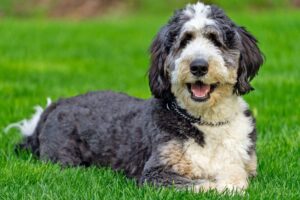
A standard Bernedoodle is one of the large designer dog breeds. They are a mix between a Bernese Mountain Dog and a Poodle and have grown in popularity due to their pleasant temperament and possible fit for families. They are sometimes described as having an excellent temperament because they combine the loyalty and tenderness of the Bernese Mountain Dog with the intellect and trainability of the Poodle. However, detractors warn that the variety in size, coat type, and energy levels can make predicting an individual Bernedoodle’s specific qualities difficult.
Prospective owners should be aware that varied coat types may necessitate regular upkeep and professional grooming. Bernedoodles with thick, curly coats may require more frequent grooming to avoid matting. Additionally, potential owners should consider Bernedoodle exercise needs, since they may have high energy levels and require regular physical activity to avoid boredom and behavioral concerns.
Pomsky
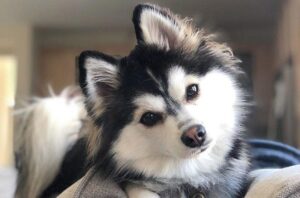
Pomskies are the product of a mix between a Siberian Husky and a Pomeranian, resulting in medium to small designer dog breeds with Husky-like characteristics. Because of the popularity of Pomskies, there has been a rise in unscrupulous breeders taking advantage of the demand, which can result in health problems and unethical treatment of dogs.
Potential owners should be mindful of the great activity and independent nature of Siberian Huskies, which can be inherited by Pomskies, according to critics. This can make them difficult to manage for unskilled or busy owners who may struggle to meet their needs for exercise and mental stimulation. Training and socialization are essential for effectively managing their conduct and preventing any complications caused by their strong-willed and energetic personality.
Cavachon
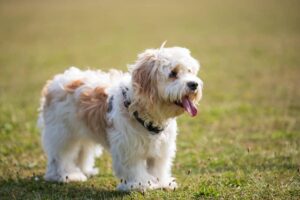
Cavachon are the offspring of a Cavalier King Charles Spaniel and a Bichon Frise. They are frequently regarded as affectionate, pleasant, and family-friendly. However, critics point out that due to the unpredictable nature of crossbreeding, the temperament of individual Cavachon can vary greatly.
Before making a selection, prospective owners should meet and examine the personalities of certain Cavachons. Furthermore, Cavachon is susceptible to some health disorders that are widespread in their parent breeds, including mitral valve disease and syringomyelia. Probable owners should be prepared for probable health issues as well as the accompanying veterinarian care costs.
Note: There might be affiliate links mentioned here. We may receive a commission if you purchase a product through an affiliate link. There is no additional charge for you. Please do your own research before making any online purchases.
Considerations for Potential Owners

Let’s see some major considerations that potential owners have to look out for when looking to buy a popular or a large designer dog breed.
Lifestyle Compatibility
Potential owners must analyze their lifestyle and ensure compatibility with the breed’s activity level and exercise needs when considering a designer dog breed. Some popular and large designer dog breeds may have high energy and demand a lot of exercise and mental stimulation. To prevent behavioral issues and enhance overall well-being, it is critical to give suitable outlets for their energy.
Furthermore, while some designer dog breeds are marketed as hypoallergenic or low-shedding, it is crucial to remember that individual dogs can still create allergens, and allergy sensitivities might differ between individuals. Before making a selection, potential owners with allergies should spend time with specific dogs to check their compatibility.
Training and Socialization
The most popular designer dogs like all dogs, necessitate regular and positive reinforcement training approaches. While they can be intelligent and trainable, prospective owners should be informed that they may inherit characteristics from their parent breeds that make training more difficult. To ensure a well-behaved and obedient companion, it is necessary to devote time and effort to training.
Designer dog breeds require the same level of socialization. Early socializing helps puppies grow well-adjusted and comfortable in a variety of social contexts. Neglecting proper socialization can result in behavioral disorders such as fear, anger, and anxiety. To ensure the long-term well-being of their designer dog, potential owners should commit to providing adequate socialization opportunities.
Health and Veterinary Care
While crossbreeding may lessen the incidence of certain genetic illnesses in small and large designer dog breeds, potential owners should be aware that they can inherit health issues from their parent breeds. Regular veterinary examinations and preventive care are required to ensure their overall health and well-being.
Designer dog breeds should undergo genetic health testing to discover potentially inherited disorders. To reduce the risk of passing on hereditary problems, responsible breeders undergo extensive health exams and genetic tests. It is crucial to emphasize that not all health problems can be predicted or prevented by testing. Probable owners should be prepared for probable health issues as well as the accompanying veterinarian care costs.
Responsible Breeding Practices
When contemplating between small, medium or large designer dog breeds, it is critical to select reputable breeders who value their dogs’ health and welfare. Responsible breeders follow ethical norms, conduct health exams, and offer their puppies a nurturing environment.
Unfortunately, the strong demand for designer dog breeds has led to overpopulation and the neglect of other worthy canines in shelters and rescues. Potential owners should think about the ethical implications of supporting the designer dog industry, and they should be wary of breeders who favor quantity above quality. Adoption from shelters and rescues is a great option because there are so many excellent mixed-breed and purebred dogs in need of loving homes.
Controversies Surrounding Designer Dog Breeds

While designer dog breeds have grown in popularity, they are not without controversy. Designer dog critics and supporters have argued about many elements of these breeds. Let’s look at some of the debates around designer dog breeds:
Ethics of Breeding
One of the most contentious issues regarding designer dog breeds is the ethics of breeding. According to critics, the strong demand for these breeds has resulted in overbreeding and the neglect of other deserving canines in shelters and rescues. Profiteering breeders may favor quantity above quality, resulting in potential health and temperament concerns in the offspring.
Furthermore, some critics say that intentionally creating hybrid dogs is a type of genetic manipulation for human preferences. They argue that breeding should focus on preserving and improving existing breeds rather than developing new ones.
Health Concerns
While crossbreeding may lessen the occurrence of some genetic illnesses, opponents point out that designer crossbreed dogs may still acquire health problems from their parent breeds. Some opponents suggest that the lack of clear breeding standards, as well as the haphazard nature of early crossbreeding initiatives, may have contributed to inconsistency and health issues in certain designer breeds.
Furthermore, some skeptics challenge the concept of hybrid vigor, which implies that crossbreeding produces healthier puppies. They contend that the concept is sometimes overblown and that individual health outcomes differ. Critics advise owners to be informed of the potential health dangers and to ensure that ethical breeders do thorough health testing and screening.
Purity of Breeds
Crossbreeding, according to critics of designer dog breeds, dilutes the purity of established breeds. They believe that recognized breeds should be preserved rather than crossed with other types to generate new ones. They say that intentional breed mixing blurs the borders and erodes the specific qualities and traits that distinguish purebred dogs.
Some opponents worry that the popularity of designer crossbreed dogs may overshadow the value of purebred dogs, resulting in a reduction in breed diversity and preservation efforts.
Unpredictability of Traits
The unpredictable nature of designer crossbreed dogs is one of the accusations directed against them. While supporters believe that new breeds incorporate the greatest aspects of their parent breeds, detractors point out that the temperament, look, and other attributes of designer dogs can still vary greatly.
Because desired features may not always be present in every particular dog, the potential for customization in designer dog breeds might lead to confusion. Critics warn prospective owners not to rely entirely on the expectations established by the breed name and evaluate each dog individually to discover its unique characteristics and suitability for their lifestyle.
Lack of Breed Recognition
Kennel bodies such as the American Kennel Club (AKC) and the Kennel Club (UK) do not officially recognize designer crossbreed dogs as breeds. According to critics, the absence of formal acknowledgment is a crucial element to consider when assessing the legitimacy and long-term stability of designer breeds.
Potential owners may have difficulty locating trustworthy breeders, participating in particular dog events and contests, and acquiring correct information about the breed’s standards and traits if the breed is not recognized.
The Future of Designer Dog Breeds
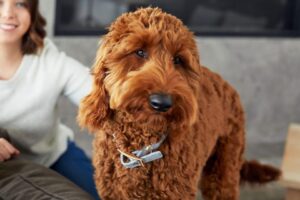
Despite the controversy and debate surrounding designer dog breeds, their popularity does not appear to be decreasing. These one-of-a-kind and endearing friends continue to win the hearts of dog lovers all across the world. As the demand for designer dogs grows, it is critical to address critics’ concerns while also ensuring acceptable breeding procedures and ethical issues.
Designer dog breeds’ future is in the hands of breeders, potential owners, and the larger dog-loving community. Responsible breeders must prioritize their dogs’ health and well-being, undertake extensive health checks and genetic studies, and work to enhance breed standards. When selecting a designer dog breed, potential owners should conduct a comprehensive study, consider their lifestyle and dedication to responsible ownership, and make informed judgments.
Furthermore, education and awareness regarding the ethical implications of designer dog breeds should be pushed. Adoption from shelters and rescues, where many magnificent mixed-breed and purebred dogs need loving homes, should be encouraged for prospective owners.
Furthermore, regulatory organizations and kennel clubs can influence the destiny of designer dog breeds. They can set norms and criteria for responsible breeding procedures, evaluate new breeds thoroughly, and provide correct information to potential owners.
By resolving the debates, fostering ethical breeding, and assuring canine well-being, the future of designer dog breeds can combine the distinctive qualities and aesthetics these breeds provide with a commitment to their health, temperament, and overall well-being.
Designer dog breeds have made an undeniable impact on the world of canine companionship. Their distinct blend of characteristics, beauty, and customizability has caught the attention and admiration of dog aficionados worldwide. However, it is critical to recognize the conflicts and concerns surrounding these breeds.
Critics highlight real concerns regarding breeding ethics, health concerns, the integrity of existing breeds, characteristic unpredictability, and the lack of formal recognition.
Potential owners should approach the decision to acquire a designer dog breed with caution, considerable research, and an understanding of the obligations and problems that come with dog ownership.
The most crucial consideration in choosing a designer dog breed, a purebred, or a dog from a shelter or rescue organization is providing a caring, nurturing, and responsible home for a furry companion.
The world of designer dog breeds may continue to expand in a way that prioritizes the health, well-being, and overall welfare of these cherished canine companions by making informed decisions and advocating ethical breeding techniques.
Responsible Ownership and Care of Designer Dog Breeds

Once the decision to adopt a designer dog breed into one’s life has been taken, it is critical to grasp the obligations and commitments that come with responsible ownership. Here are some crucial factors to consider when caring for designer dog breeds:
Health and Veterinary Care
Regular veterinarian care is required to ensure the health and well-being of a designer dog, regardless of breed or crossbreed. Routine check-ups, immunizations, and parasite prevention treatments are all suggested. Furthermore, it is critical to identify specific health risks linked with the designer dog’s parent breeds and work closely with a reputable veterinarian to address any potential issues.
Designer dog breeds can benefit from genetic health testing as well. While it cannot anticipate or prevent all health problems, it can provide important information about potentially inherited illnesses. Responsible breeders frequently conduct health examinations and keep records of the results. Potential owners should inquire about the parent breeds’ health testing and obtain access to pertinent health documents.
Nutrition and Exercise
Proper nutrition is essential for any dog’s overall health and well-being, especially designer breeds. Consult a veterinarian to develop a diet that fits the nutritional requirements of the unique designer breed. Consider the dog’s age, size, activity level, and any special nutritional needs or allergies.
Exercise is essential for the physical and mental well-being of a designer dog. Investigate the exercise requirements of the parent breeds and develop a regular exercise plan that gives the designer dog a suitable level of activity. This could include daily walks, plays, and interactive activities that stimulate the dog’s body and mind.
Training and Socialization
Designer dog breeds, like all dogs, benefit from good socialization and training. Positive reinforcement training approaches, such as reward-based training, can be extremely helpful in teaching desired behaviors and strengthening the link between the owner and the dog.
Socialization should begin early in the dog’s life and continue throughout his or her life. To assist the designer dog acquire appropriate social skills and flexibility, expose them to a variety of surroundings, people, animals, and situations. This can help prevent behavioral issues and ensure that the dog is at ease and well-behaved in a variety of social settings.
Grooming and Maintenance

Designer dog breeds may have distinct coat types and grooming needs. Regular grooming is required to keep the dog’s coat healthy and attractive. Brushing, bathing, nail trimming, and dental care are all examples of personal hygiene.
Professional grooming services, like haircuts or specific grooming procedures, may be required for some designer crossbreed dogs.
Research the designer breed’s individual grooming requirements and create a grooming program accordingly. Seek advice from expert groomers or breed-specific materials to ensure optimal coat care and hygiene for your dog.
Time, Attention, and Companionship
Designer dog breeds thrive on love, attention, and friendship, just like all dogs. They are social animals who require human interaction and participation. Prepare to spend quality time with the dog, to provide cerebral stimulation through play, training, and enrichment activities, and to give them the love and affection they require.
Think about how much time and care you can devote to a designer dog breed. Some breeds may require more exercise, training, and companionship than others. Examine your lifestyle, work schedule, and family obligations to ensure you can meet the dog’s physical and emotional demands.
FAQs
What are designer dog breeds?
Designer dog breeds are mixed-breed canines that combine the traits of two purebred dogs.
Where do designer dog breeds come from?
Designer dog breeds are the result of intentional crossbreeding between two purebred dogs.
Do designer dog breeds have health issues?
Designer dog breeds can still inherit health problems from their parent breeds, although crossbreeding may reduce the occurrence of some genetic illnesses.
Are designer dog breeds predictable in terms of temperament?
The temperament of designer dog breeds can vary greatly due to the unpredictable nature of crossbreeding.
Are designer dog breeds more attractive than other dogs?
While designer dog breeds may have distinct and appealing appearances, it’s important to prioritize health and temperament over physical appearance.
What are the benefits of getting a designer dog breed?
Some benefits of designer dog breeds include potential health advantages due to hybrid vigor and the possibility of combining desirable traits from parent breeds.
How should potential owners choose a designer dog breed?
Potential owners should thoroughly research the specific designer dog breed they are interested in, meet individual dogs to assess temperament and compatibility and ensure responsible breeding practices are followed.
What considerations should potential owners have for designer dog breeds?
Potential owners should consider lifestyle compatibility, training and socialization needs, health, and veterinary care requirements, and support responsible breeding practices.
What are the controversies surrounding designer dog breeds?
The controversies surrounding designer dog breeds include concerns about the ethics of breeding, potential health issues, the dilution of breed purity, the unpredictability of traits, and the lack of breed recognition.
What does the future hold for designer dog breeds?
The future of designer dog breeds remains uncertain, with ongoing debates and varying perspectives on their existence and popularity.
Conclusion
The responsibility of owning a designer dog breed should not be underestimated. Responsible dog ownership entails giving the dog proper health care, diet, exercise, training, socialization, grooming, and companionship. Potential owners can assure a happy, healthy, and meaningful life for their designer dog breed by being aware of these considerations and committed to meeting the needs of the dog.
Remember that adopting a dog, whether a designer breed or any other sort of dog, should be done with great thought, research, and a commitment to responsible ownership. A designer crossbreed dog may have distinct characteristics and aesthetics, but it is ultimately the owner’s love, care, and dedication that will lead to a successful and rewarding connection with their canine partner.


